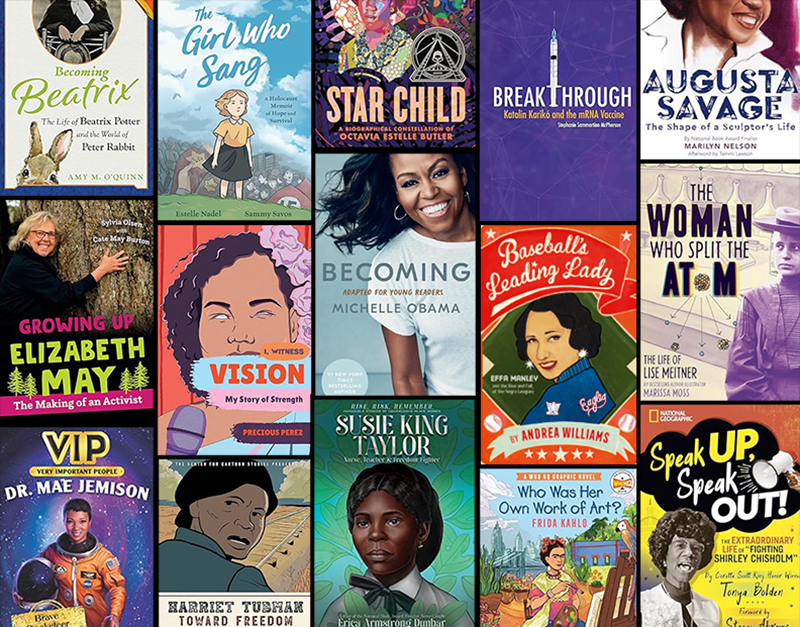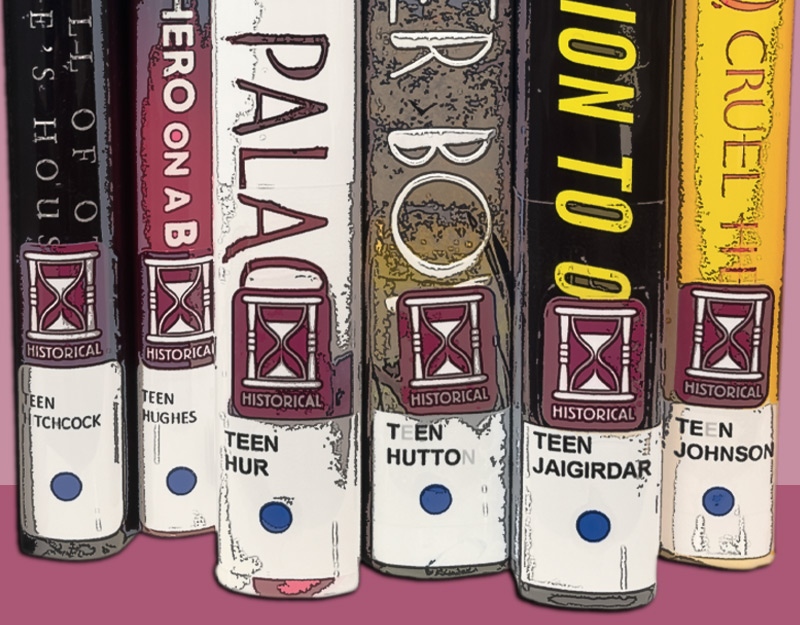The Slave Across the Street: A guest review by Anthony Fosnaugh
Since it appeared on our blog over a year ago, THIS post by Kim Purcell about Human Trafficking has consistently been our most viewed post. So I was very excited when one of my favorite teen patrons – now an adult – Tweeted me and asked if I had read a book called The Slave Across the Street. I hadn’t. I was even more excited when he asked, “Do you want me to send you my book report after I’ve written it?” And I really, really did. So here it is for you. And please do read this post to learn more about Anthony and how libraries can make a positive impact on the lives of teens.
“The Slave across the Street” is a powerful, moving book about a girl, Theresa Flores, who got basically enslaved into a sex-trafficking ring in a suburb of Detroit, Michigan.While all this is going on, she’s living at home with her parents who have no idea any of this is going on.The book is a true story, with everything in it completely fact with no name changes, no location changes, all of it one hundred percent true. Theresa is now an adult and goes around to tell her story in hopes of one day human trafficking will be a thing of the past.
Theresa’s four major messages or themes in “The Slave across the Street” can vary depending on the reader. One of the messages I received is the fact that not everything is as it appears.This applies to situations like Theresa’s because she was able to hide what was happening to her from everyone, including her very own parents, and did a very good job at it.She had to keep everything a secret or everything about her would be ruined. Her life, her family, her school life, everything, all because of pictures taken during the first encounter with the Chaldeans.When people asked her about her bruises or marks on her body, she would make up a lie, saying she ran into something at home or work, or whatever she could use. To explain why she was late coming home she used track practice, or other lies to cover the hidden truth from her parents.The message of not everything is as it appears applies to many other situations in life also, but in Theresa’s case, it was far from what it appeared.
ADVERTISEMENT
ADVERTISEMENT
Another message I have gotten from reading “The Slave across the Street” is that people, no matter who it is, can control other people with fear, threats, and lies.This is exactly what happened to Theresa.She was controlled with fear, constant threats, and nothing but lies. The Chaldeans’ human trafficking ring was a major sex ring and they knew how to work the girls they set their sights on to be involved. They knew how to control a young, innocent child with fear, threats, and lies.Theresa was scared not only for her own life, but for the life of her own family.She was threated not to tell anybody about what was going on or the consequences would be horrible or even become deadly. A prime example of this is at one point in time Theresa noticed her dog, Bowser, was missing. Come to find out the Chaldeans kidnapped her dog and killed it.Daniel, the pawn of the Chaldeans, was nothing but a liar, and the front man for the rest of the unforgiveable men of the Chaldean sex ring. He used lies to bring Theresa into this horrible mess that scared her for life, the rest of them used fear and threats to make sure she was in check and didn’t let anyone know about them or what they were really doing.
A third message I received from Theresa’s story is that people learn to survive under extraordinary circumstances. Theresa is very lucky to survive everything that has happened to her.She’s lucky once they got tired of her they just didn’t kill her. How she made it day by day not knowing how that day was going to turn out is a miracle. She never knew when she was going to get the call, and when she did, she had to drop everything and go no matter what. At the end of the day, she was still able to wake up and go about her day like nothing happened.Everything about Theresa and how she survived this horrible experience is nothing but a miracle.Though she never learned to deal with it, the fact she’s dealing with it all to protect her family is what kept her from doing anything about it.
A final message I have received from reading this book is that if Theresa can survive, anybody can survive.With enough hope, fight, will power, and anything else you can use, you can survive.Theresa survived being a sex slave, others have survived with little to no food. The homeless go days without food sometimes and still survive.Bottom line, no matter how bad things are, if you have enough strength and hope, you can survive.After reading Theresa’s story, I now believe there is absolutely no excuse that you cannot survive even in the worst situations.
While reading “The Slave across the Street”, I noticed a few other things also.Women have an uncanny ability to protect and survive. By this I mean protect their family, friends, and themselves.Women have the ability to survive in situations that range from simple to completely unimaginable.They have the ability to adapt to situations put in front of them. This is exactly what Theresa had to do, and quick, or she suffered the consequences, and suffered hard. From reading Theresa’s story, women can also suppress emotion, build walls, close down, lie, and do what they have to do to survive.Though it may take some time or a certain circumstance to happen, for example, something as simple as someone asking “Is there something wrong?” or “Do you need medical help?” to get the courage to ask for and receive help. There are thousands or hundreds of thousands that do not feel worthy of help or do not survive such horrific evils of the world.So if and when they do come across that one person that asks “Do you need help?” all one can do is pray they feel worthy enough of saying “Yes”.
If I was to integrate one of the four major feminist frameworks to Theresa’s story “The Slave across the Street”, I would have to say the radical framework fits this story more.The reason why I say this is because the key concepts of the radical framework “Women are Objects” and “Men and women are different: women are more loving, caring, spiritual; men are more power-domination-seeking”. In the case of Theresa’s story, Theresa was in fact an object.A sex object to the Chaldeans.She was another victim in the world of human trafficking. The Chaldeans also fit this framework because they are domination seeking men.Since the Chaldeans used numbers to their advantage to one defenseless girl, all the power was in their hands just like they wanted. Theresa knew what was going on, and she knew she couldn’t do anything but be the Chaldeans object, their sex slave, until they decided they were done with her.The sad part is even then she didn’t know if she would walk out alive. She never knew if when they were done they were going to just kill her or not.She was nothing but an object.
Theresa is one lucky woman and she’s lucky to be alive. The fact she grew the courage to stand up and speak out against human trafficking take so much courage. With this horror she endured, she has all the momentum in the world to be in the fight against human trafficking. After reading “The Slave across the Street” I honestly have a different outlook on how things really are. On the days where I have a bad day and complain about a simple headache, or I hear someone else complaining about how they have to go to work when they don’t want to, I just want to stop immediately and think about Theresa’s story and think about everything she had to go through.The fact she went through hell and back and still have her life almost one hundred percent back is absolutely amazing, and I have no room to complain about a simple headache.As a male, her story has touched me, and opened my eyes. I knew human trafficking was here in America, but I never knew it was that bad, and it can only be worse. Theresa is a powerful woman full of heart and courage, and after this experience, even after all the scars, physical and emotional, she’s one of the strongest women on this planet. An unknowing number of girls, and boys, go through what she went through.All we can do now is join the fight and hope that one day, human trafficking as a whole is nothing but history.
I know that Anthony recently met Theresa in his class that he wrote this paper for and he was excited to get to talk to her.
For more information on Human Trafficking, please read these posts:
Fear in Writing, Fear in Life by Kim Purcell
Human Trafficking, you can get involved and help by Kim Purcell
Filed under: book review, The Slave Across the Street, Theresa Flores
About Karen Jensen, MLS
Karen Jensen has been a Teen Services Librarian for almost 30 years. She created TLT in 2011 and is the co-editor of The Whole Library Handbook: Teen Services with Heather Booth (ALA Editions, 2014).
ADVERTISEMENT
ADVERTISEMENT
SLJ Blog Network
Name That LEGO Book Cover! (#53)
Cover Reveal and Q&A: The One and Only Googoosh with Azadeh Westergaard
Exclusive: Vol. 2 of The Weirn Books Is Coming in October | News
Fighting Public School Book Bans with the Civil Rights Act
ADVERTISEMENT









This comment has been removed by the author.
This comment has been removed by the author.
Thank you for the extensive review of The Slave Across the Street. Theresa is brave to share her riveting story and I am honored to have been her writer.
Freedom for all,
PeggySue Wells